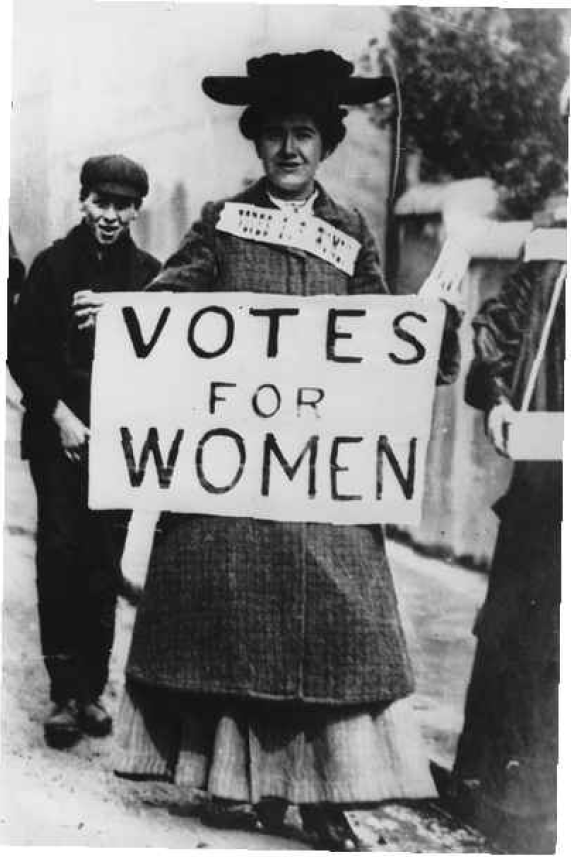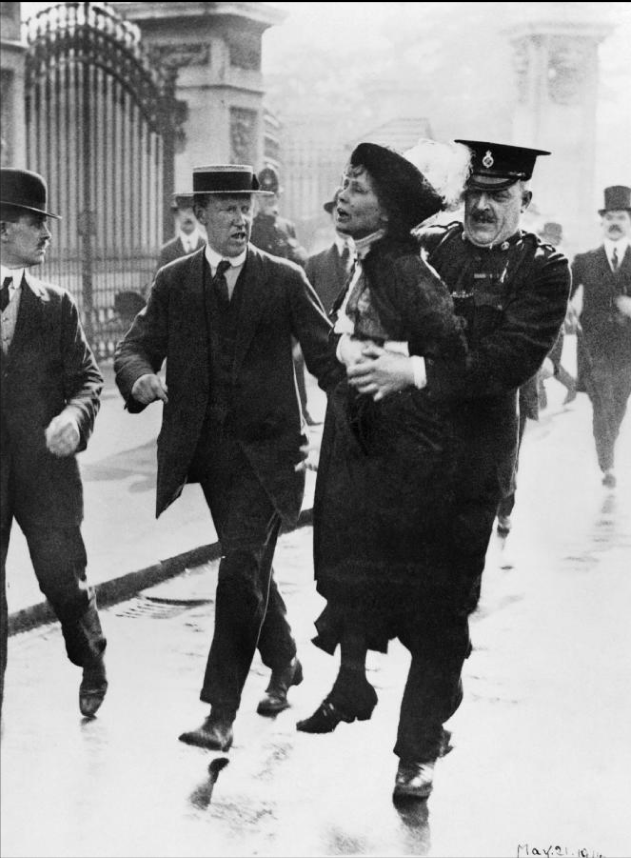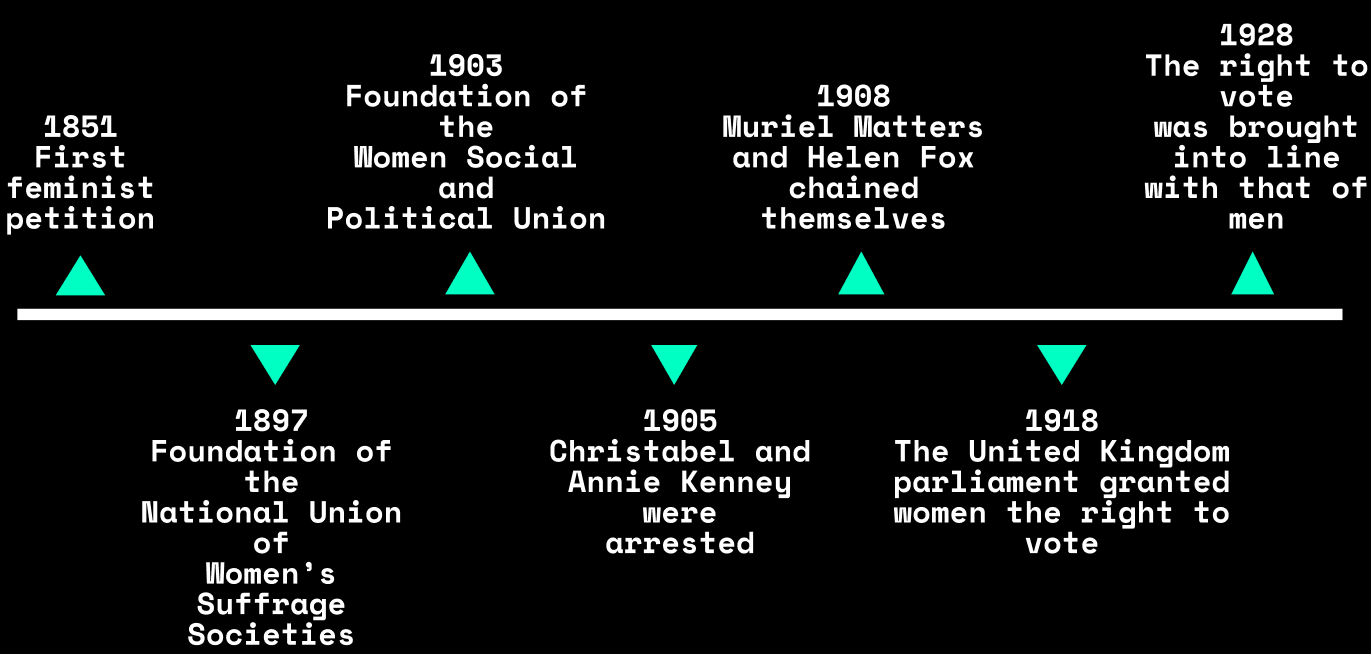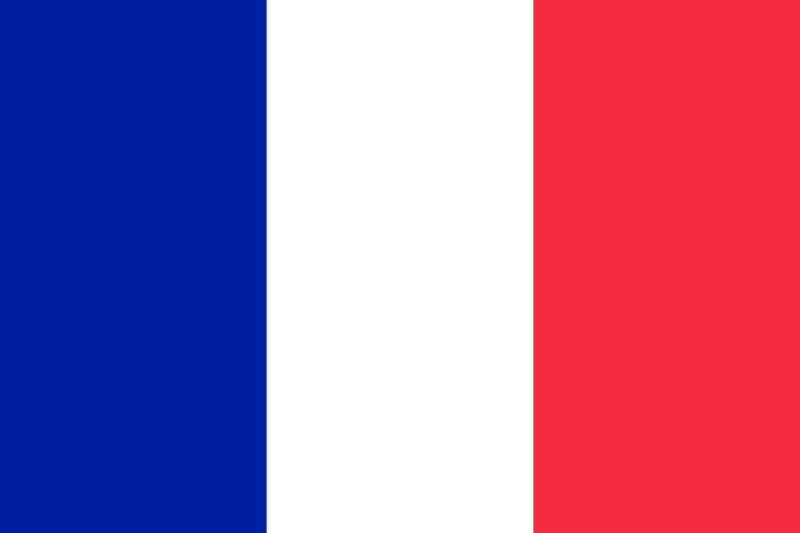Why do they fight?
Women before the First World War had no right to vote,
so women lived (until 1918) without the right to express themselves.

This photography represents Emeline Phankurst holding a sign with the inscription “Vote for Women”. She was doing this to protest against the law in the UK (She also created the WSPU: Women Social and political Union in 1903)
There were also inequalities regarding property (women could not dispose oftheir own property) and were restricted to the guardianship of their husbands
There were also inequalities regarding property (women could not dispose oftheir own property) and were restricted to the guardianship of their husbands
The beginnings of feminism
In 1851, the first feminist petition to parliament asking for women's right to vote rose in Great Britain. Millicent Fawcett founded the National Union of Women's Suffrage Societies* in 1897
to obtain the right to vote in a peaceful manner, justifying this action by theobedience of women to the law, which meant that they also had to have the right to take part in drafting it.
Subsequently in 1903 Emeline Pakhurst founded the Women Social
and Political Union* with her three daughters (Christabel,Sylvia, and Adela) and a group of British women who were soon renamed Suffragettes*
In 1905 Christabel and Annie
Kenney were arrested for shouting slogans in favour of women's suffrage at a Liberal Party* political meeting. They were imprisoned instead of paying the fine, which led to a series of arrests that aroused growing publicsympathy. The suffragettes also set fire to institutions that were symbols of male supremacy.
In 1908, Muriel Matters and Helen Fox chained themselves to the gates of the Ladies' Gallery in order to darken the parliamentary chamber (the gates had to be dismantled to free them).
After all these actions, Winston
Churchill spoke out for women's
suffrage while refusing to give
in to the outlawed actions of the
suffragettes, after which hunger strikes
were organised in the prisons where the
suffragettes were incarcerated to
protest against the state's decisions.

Emeline Phankurst arrested in front of the Buckingham in London. She was trying to present a petition to King George V, in may 1914
The methods used by the suffragettes
to make themselves heard
were sometimes pacifist but often not.
First of all there were
different types of demonstrations
in the streets to make their de
mands heard.
But also many people attributed the
feminists to terrorists. During the
movement several bombs were used (e.g.
Westminster Abbey and St. Paul's
Cathedral), railway stations were blown
up and the home of Chancellor David
Lloyd George was blown up.
(There are also reports that the suffragettes
used poisoned letters to kill the recipients)
The concretisation of the movement
During the First World War women
were used as replacements for men,
so female capabilities were questioned.
The United Kingdom parliament then
granted women
the right to vote in 1918
(for women over 30) Then in 1928, the right
to vote was brought into line with that
of men (same conditions required), the
United Kingdom was the 8th country to
grant women the right to vote
Timeline
 Glossary
Glossary
National Union of Women's Suffrage
Societies: The National Union of Women's
Suffrage Societies (NUWSS), also known
as the Suffragists to distinguish
themselves from the Suffragettes, was
anorganization that campaigned for
women's suffrage in the late
nineteenth and early twentieth
centuries in the United Kingdom.
Women Social and Political Union: The
Women's Social and Political Union,
often referred to by its acronym WS
PU, was a feminist organization
founded in 1903 and disbanded in 1917,
which campaigned for women's right to
vote in the United Kingdom.
Suffragettes: English feminist who
fought for gender equality and in
particular to obtain the right
to vote for women.
Liberal party: A liberal party is a
political party that advocates ideas
related to liberalism. In many
countries, there is a liberal or
liberal-like party. But depending
on the country, the term liberal can
cover a variety of ideologies on the
political spectrum.

